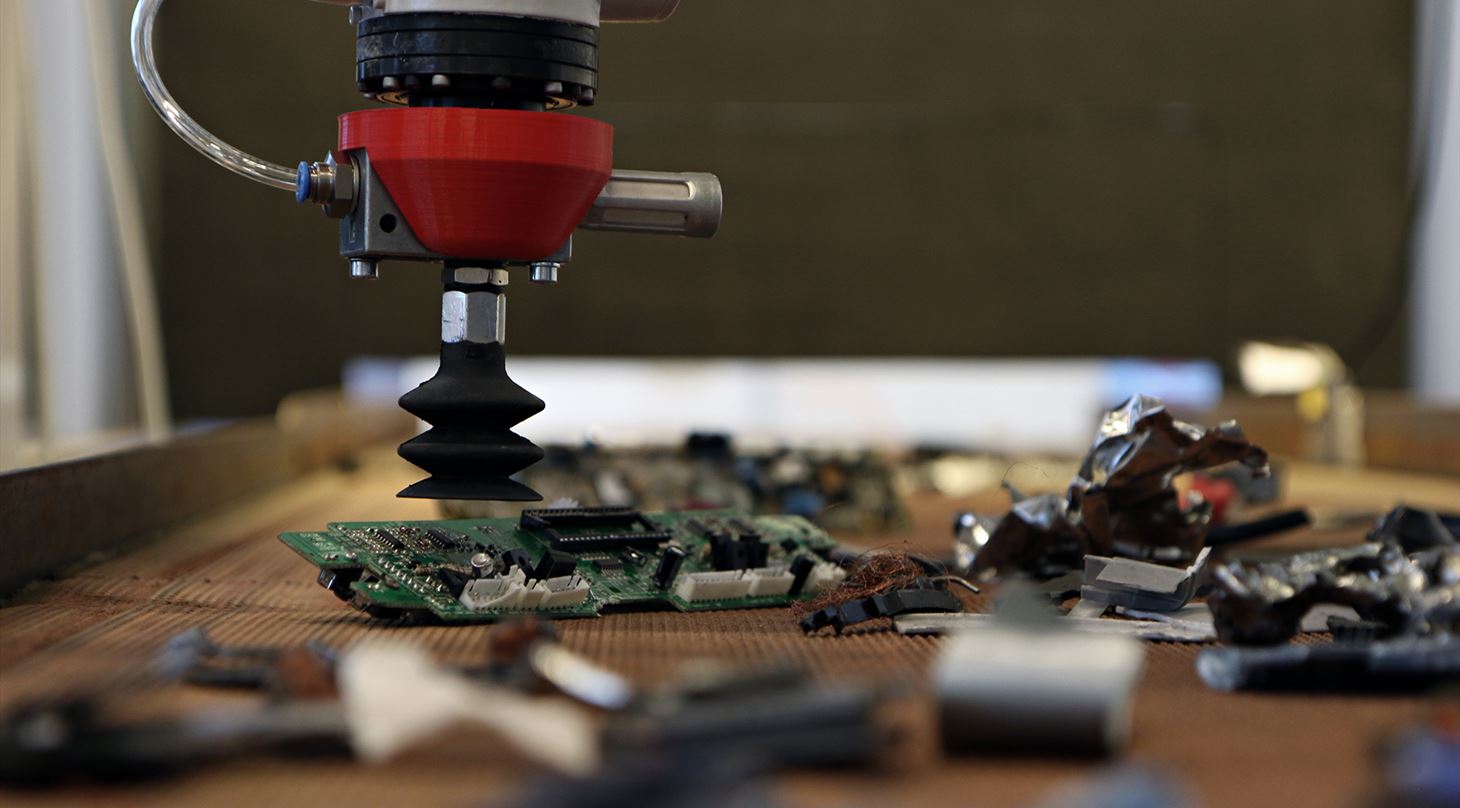
Robots with artificial intelligence to sort hazardous waste
Technological items often have one thing in common: that they use some form of battery. Batteries are used in our smartphones, laptops, remote controls, etc. - useful but dangerous, and just as dangerous when discarded.
Batteries include chemicals like lead, sulfuric acid and cadmium – a cocktail of hazardous chemicals and metals that are harmful to the environment, animals and humans. Therefore, a new project will examine the possibility of using robotics to handle and sort hazardous waste with a focus on batteries.
- The purpose of the project is to explore ways of recognizing electronic items with batteries (and also loose batteries) in order to handle and sort them. Using advanced vision technology, we try to equip the robot with "eyes" that can identify and distinguish items that contain batteries, says project leader and vision expert Michael Nielsen from DTI’s Center for Robotics.
Artificial intelligence must learn to recognize waste containing batteries
DTI and the Swedish company Refind Technologies are developing a new robot that uses vision systems and "deep learning" to distinguish between different types of batteries and to identify battery-containing items hidden amongst other electronic waste.
- Deep learning systems can, in contrast to traditional machine learning, learn to make much of the pre-treatment, which previously had to be constructed manually, says Rasmus Johansson from Refind Technologies.
- The challenge here is that items containing batteries can look very different and nothing presents the same pose each time. Therefore, we must feed our artificial intelligence with thousands of different pictures when teaching it to recognize objects with batteries. But the challenge is in fact not about teaching the artificial intelligence to recognize items already seen during training, but getting it to recognize items that have never seen before but which are the same type as those that have been taught, he adds.
Refind Technologies’ role in the project is to develop software for the identification of batteries - and they already have battery sorting systems.
This is how we shall handle hazardous waste in the future
Stena Recycling handles waste which includes batteries and would like an automated solution that protects employees, the environment and makes it easier to recycle these materials.
- Consumption is increasing and has also changed, we now consume more technology than before, creating more electronic waste. At Stena Recycling we take care of the environment, safety and our employees. Therefore, we are interested in automating our processing of electronic waste. In this project we can contribute with experience from the real world, says branch and production manager Gerd Engelbrecht from Stena Recycling Denmark.
- We aim for sustainable recovery, since we have a strong focus on circular economy. Sustainability drives the development of waste handling techniques, methods for minimizing waste and the phasing out of hazardous substances in the future. Therefore, this is about good waste economy with high safety and environmental benefits in both the short and long term. Metal from batteries can also be recycled into raw materials for new products.
In the video below you can gain an insight into how DTI's robot specialists are working with artificial intelligence in relation to waste sorting.
AAWSBE1 - Adaptive automated WEEE sorting 1: battery extraction - as the project is called - is coordinated by DTI with Refind Technologies and Stena Recycling Denmark as partners. The project is supported by EU funds through ECHORD++.